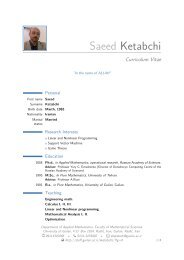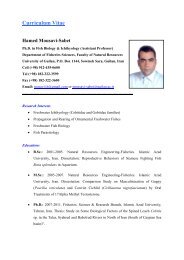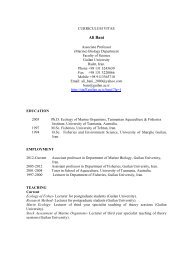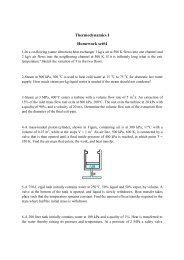Medical Tourism in Developing Countries
Medical Tourism in Developing Countries
Medical Tourism in Developing Countries
- No tags were found...
You also want an ePaper? Increase the reach of your titles
YUMPU automatically turns print PDFs into web optimized ePapers that Google loves.
172 ● <strong>Medical</strong> <strong>Tourism</strong> <strong>in</strong> Develop<strong>in</strong>g <strong>Countries</strong>of pocket s<strong>in</strong>ce private, social, and community <strong>in</strong>surance covers only some14 percent of the population. 5 In Chile, private <strong>in</strong>surance covers 23 percentof the population and the public covers 63 percent. 6 The rema<strong>in</strong><strong>in</strong>g14 percent either have no <strong>in</strong>surance, or are covered by other private plans.The problem with look<strong>in</strong>g at average aggregates <strong>in</strong> health care is thatthey mask <strong>in</strong>equalities. This <strong>in</strong>equality manifests itself <strong>in</strong> a lot more thanthe difference between care for rich foreigners and poor locals. In develop<strong>in</strong>gcountries, there is vast <strong>in</strong>come <strong>in</strong>equality, more so than <strong>in</strong> the West andthat is reflected <strong>in</strong> the health care that people receive. Samuel Preston notesthat the higher the average <strong>in</strong>come per capita, the longer the life expectancy.7 Pearce offers data from Africa to show that health differentials follow<strong>in</strong>come and class differentials (he states that class membership affects thetime of death and types of illnesses experienced: for example, children ofprofessionals have lower mortality rates than others 8 ). Associated with<strong>in</strong>come and class is also privilege, and Pearce notes that some diseases aremore prevalent among privileged people, <strong>in</strong>clud<strong>in</strong>g sleep<strong>in</strong>g sickness. 9(This is because the tse tse fly is dependent on horses and other animals,so those who can afford to own horses are at risk.) In addition to <strong>in</strong>comeand class, gender and age are also factors <strong>in</strong> health-care <strong>in</strong>equality. Indeed,women, children, and the elderly are especially at risk. Moreover, there is<strong>in</strong>equality based on geographical location, especially along the urban/ruraldivide. The urban bias that Michael Lipton identifies <strong>in</strong> develop<strong>in</strong>g countriesextends to health <strong>in</strong>sofar as rural areas lack the health professionals andhealth facilities that urban areas enjoy.When <strong>in</strong>equality among people and regions is so prevalent, the benefitof conquer<strong>in</strong>g illnesses is partially lost. Diseases and illnesses do not respectgender or <strong>in</strong>come boundaries. Disease spreads faster and penetrates deeperwith globalization. No matter where the health crisis is, <strong>in</strong> an <strong>in</strong>creas<strong>in</strong>gly<strong>in</strong>tegrated world, everyone has the potential to get it. For these reasons, theWHO says that equitable access to health care must be one of the top policyobjectives <strong>in</strong> develop<strong>in</strong>g countries. 10Basic Health Care and Economic DevelopmentIs it important for a chambermaid <strong>in</strong> an LDC resort to have access to cleanwater and basic sanitation, sufficient food to eat, and medical attention ifshe needs it? The answer is of course yes, but on more than moral grounds.Extend<strong>in</strong>g the question to the entire labor force, and even the entire population,the answer would still be affirmative. The reason, beyond basichuman rights, is that there is a circular, self-perpetuat<strong>in</strong>g, causal relationshipbetween basic health care and economic development.
















